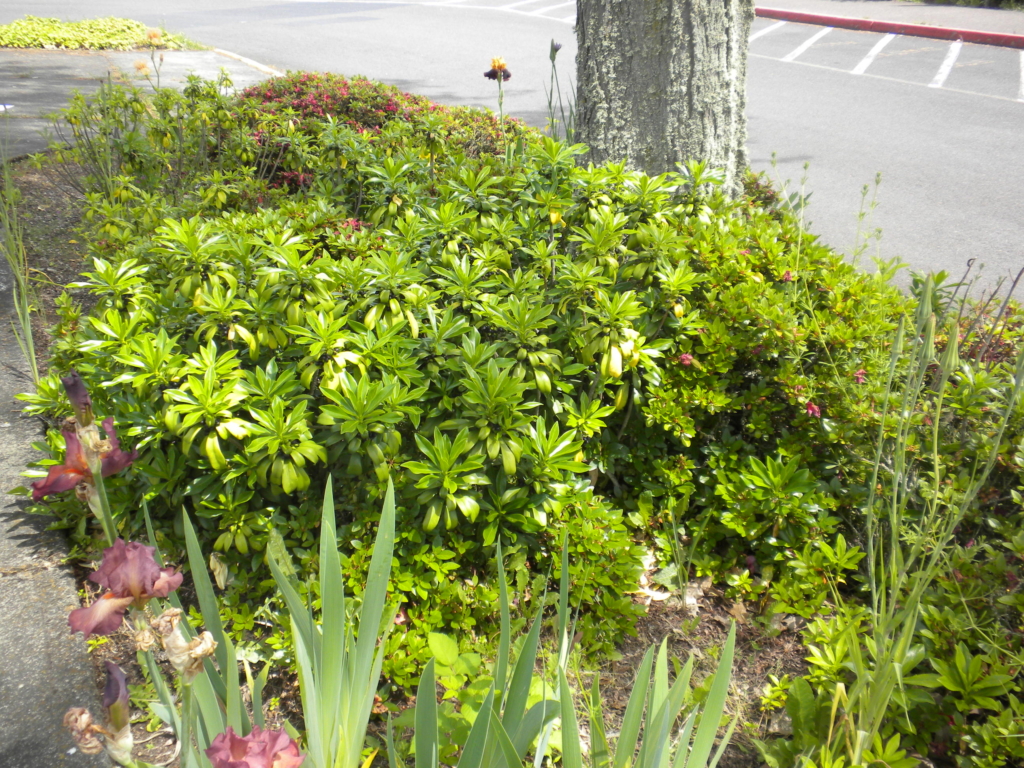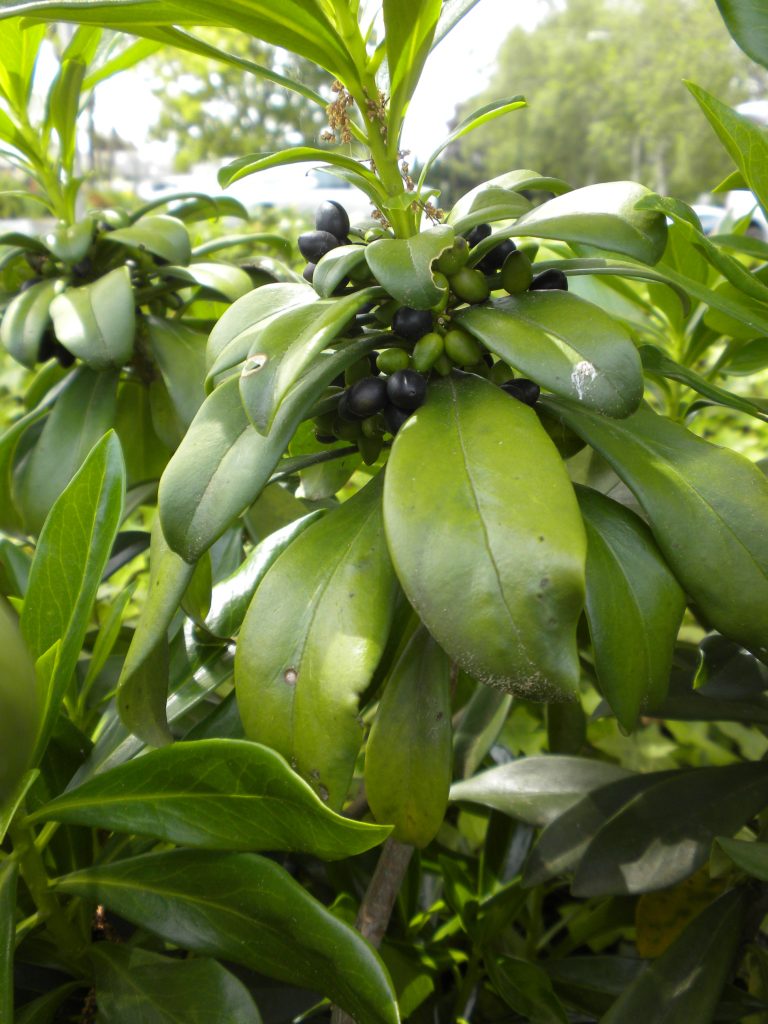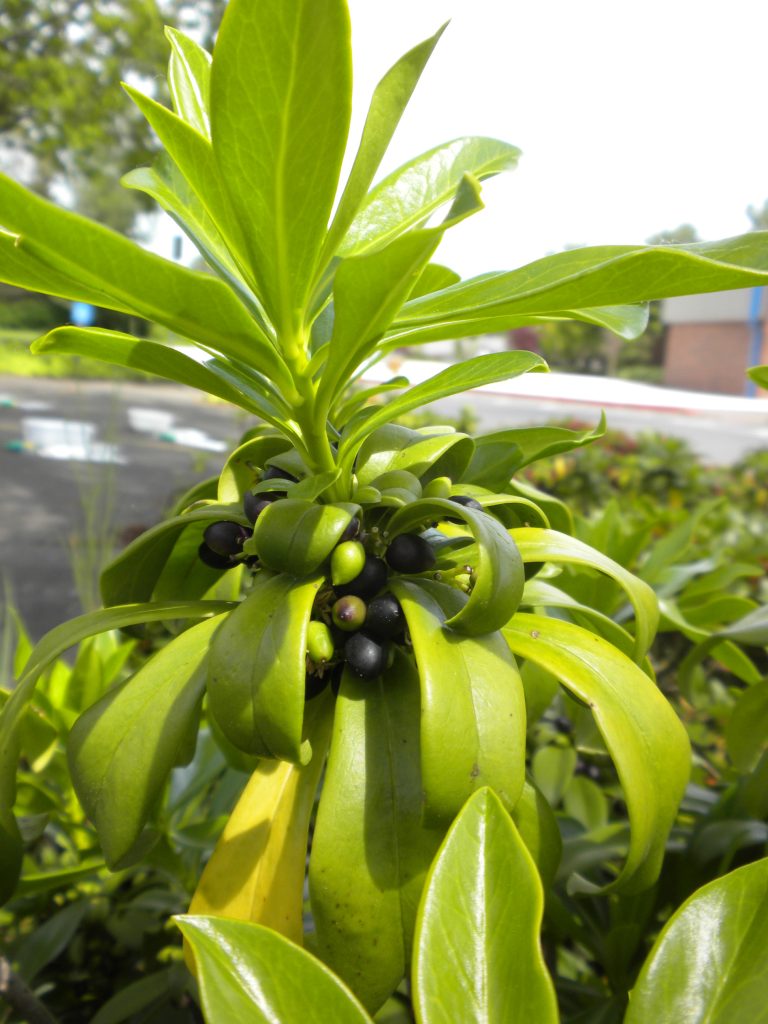Spurge Laurel
Daphne laureola
Plant Description
Spirally arranged leaves; yellow-green bell shaped flowers grow in clusters between leaves at tops of stems; green to black egg-shaped berries.
Plant Details
| Life Forms | |
|---|---|
| Habitats | |
| ODA Listing | |
| Soil and Moisture Conditions | |
| Suggested Actions | |
| Shade Preference | |
| Mature Height | 1.5-5' |
| Distribution | Found in most of western Oregon, especially the Willamette Valley. Also found in the Columbia River Gorge area. |
| Control | Hand pull, dig up, or use a weed wrench to extract the plant and roots. Repeat annually until no more seedlings are found. |
| Disposal Methods | Fruits should be bagged and placed in municipal waste. |
| Reproduction and Spread | Birds spread the seeds. |
| Introduced | Native to Europe and Northern Africa |
| Look Alikes | Rhododendrons, Andromeda |
| Impact | Can degrade Douglas-fir forests and Oak woodlands. Forms thick patches that block sunlight, out-compete native flora, alter the soil chemistry, and potentially alter natural succession. The leaves, bark, and berries are toxic to humans, dogs, and cats. |
| More Info |
© Marion Soil and Water Conservation District. All Rights Reserved.




